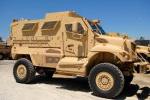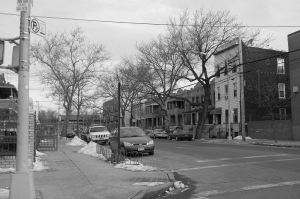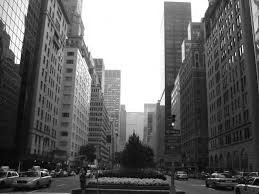I was a college student in New York City during the halcyon days of the anti-War movement, when there must have been a demonstration against the Viet Nam war every week in Central Park. And while on occasion the demonstrations turned a little nasty, meaning a few “f— you’s” exchanged between the kids and the cops, I don’t recall that anything much happening as we tramped around the Sheep Meadow or listened to Dave Dellinger make a speech at the 68th Street Mall.
It therefore came as a big surprise when, many years later, I was given a tour of the warehouse that was part of the Central Park Police Precinct of the NYPD. Because sitting in the warehouse was a phantasmagoria of dusty and rusted military equipment – flak jackets, gas-masks, helmets – that could have outfitted the entire 102nd Airborne, never mind a bunch of cops who spent most of their time running over to Lexington Avenue to get doughnuts and coffee for “the guys.” My tour guide, who was a former Commander of the Precinct, told me with a chuckle that the equipment had been stockpiled during the 1960’s just in case any of the anti-War protests got “out of hand.”
 That was then, this is now. A report in The New York Times, based on documents from the Department of Defense, indicates that police departments around the country, are once again building up caches of equipment that was purchased by our military for use in places like Afghanistan and Iraq, but is now considered “excess” and if not purchased or given away to domestic customers would likely be thrown out or destroyed. You would think that police departments, all of whom always operate on shoestring budgets, would jump at the opportunity to grab free equipment that they really need, even though there will still be costs for maintenance and repairs. But some of the items that are ending up in the motor pools and storage rooms of the cops can’t possibly have anything to do with carrying out traditional ‘serve and protect’ functions of the local police.
That was then, this is now. A report in The New York Times, based on documents from the Department of Defense, indicates that police departments around the country, are once again building up caches of equipment that was purchased by our military for use in places like Afghanistan and Iraq, but is now considered “excess” and if not purchased or given away to domestic customers would likely be thrown out or destroyed. You would think that police departments, all of whom always operate on shoestring budgets, would jump at the opportunity to grab free equipment that they really need, even though there will still be costs for maintenance and repairs. But some of the items that are ending up in the motor pools and storage rooms of the cops can’t possibly have anything to do with carrying out traditional ‘serve and protect’ functions of the local police.
Among other items, the DoD has given out more than 430 MRAPs to police departments in more than 40 states. What’s an MRAP? It’s an armored vehicle designed to be resistant to land mines and other anti-personnel weapons or IEDs that played such havoc with our troops when we first invaded Iraq. Now I can understand that police in southern border states like New Mexico might feel more secure patrolling territory frequented by Mexican drug gangs, but could someone please explain to me why the cops need to ride around in an armored-plated vehicle in a town like Neenah, Wisconsin, whose 25,000 inhabitants located on Lake Winnebago haven’t seen a homicide in five years? And don’t tell me that the Neenah Police Department considers itself on the front lines of defense against terrorism because that statement was actually made in public by the sheriff of Oxford County, Maine, who justified the acquisition of a MRAP because of the possibility of “unimaginable terrorist threats.”
Let me tell you a little bit about Oxford County, Maine. It’s a hilly and largely forest-covered area which contains about 8 families per square mile. Any terrorist who wants to sneak into the United States by crossing the border from Canada into Oxford County will find that they will face a much bigger problem from the moose and the bears than from the sheriff’s deputies riding around in their MRAP.
Peter Kraska, who has been studying police and, in particular the development of SWAT teams for more than twenty years, notes that while these para-military units first started out by adopting and popularizing military jargon, are now increasingly adopting military equipment, weapons and tactics and have seen their largest growth in small and medium-size departments, many of which are actually dealing with less crime and violence than before their SWAT team was even deployed.
All of this, it seems to me, comes back to the degree to which some Americans seem prone to accept the notion that more armed force on our streets and in our homes can make us safer from terrorism and crime. And if the cops feel more comfortable tooling around in a MRAP whether they need one or not, who’s to say that some enterprising entrepreneur won’t soon deliver one customized for civilians as well? I can already see the discount coupon for such a vehicle tied to the next email from the NRA.


Recent Comments